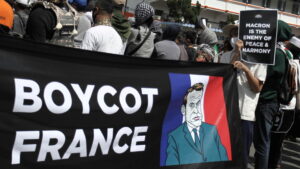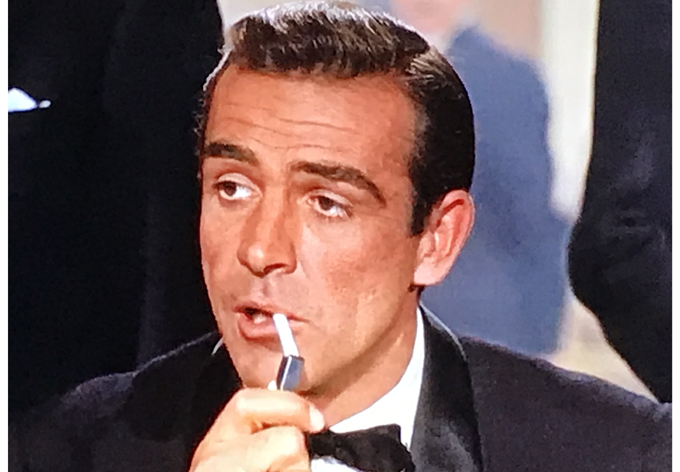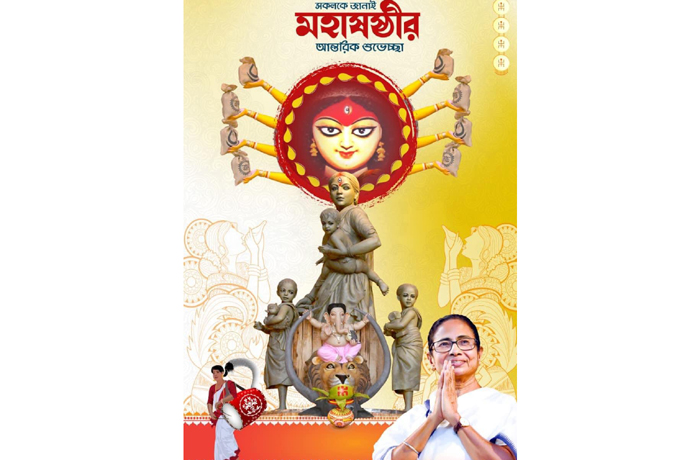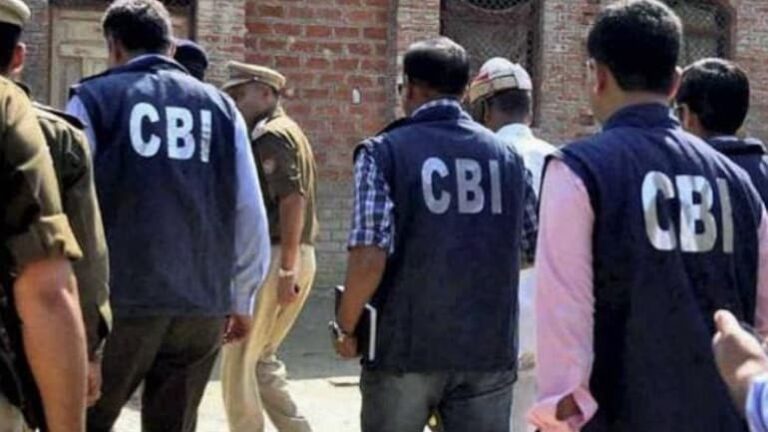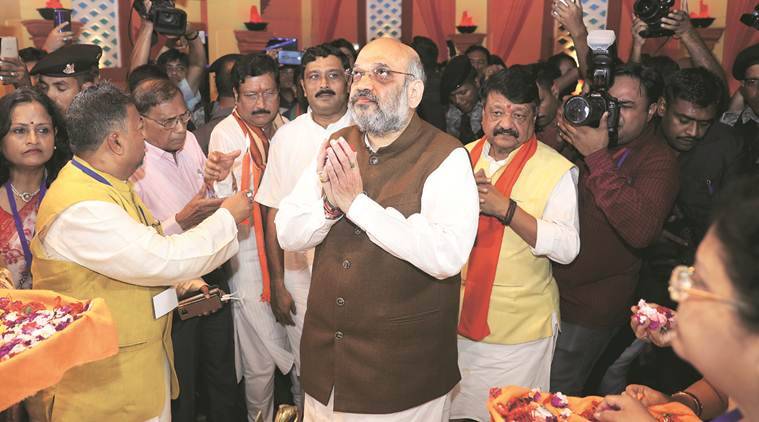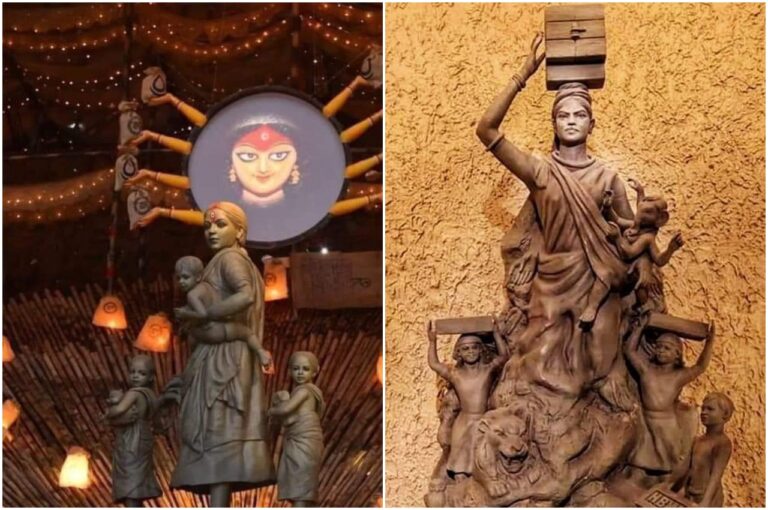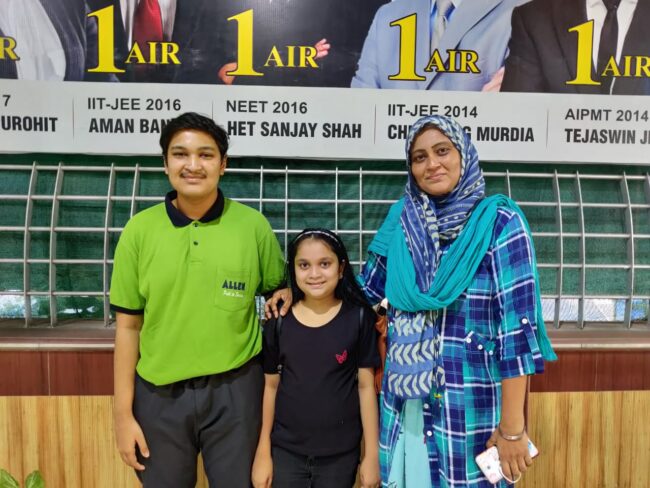आत्महत्या के लिए उकसाने का मामला संगीन है लेकिन सिर्फ नाम भर आ जाना काफी नहीं होता है। नाम आया है तो उसकी जांच होनी चाहिए और तय प्रक्रिया के अनुसार होनी चाहिए। एक पुराने केस में इस तरह से गिरफ्तारी संदेह पैदा करती है। महाराष्ट्र पुलिस को कोर्ट में या पब्लिक में स्पष्ट करना चाहिए कि क्या प्रमाण होने के बाद भी इस केस को बंद किया गया था? क्या राजनीतिक दबाव था? तब हम जान सकेंगे कि इस बार राजनीतिक दबाव में ही सही, किसी के साथ इंसाफ़ हो रहा है। अदालतों के कई आदेश हैं। आत्महत्या के लिए उकसाने के ऐसे मामलों में इस तरह से गिरफ्तारी नहीं होती है। कानून के जानकारों ने भी यह बात कही है। इसलिए महाराष्ट्र पुलिस पर संदेह के कई ठोस कारण बनते हैं। जिस कारण से पुलिस की कार्रवाई को महज़ न्याय दिलाने की कार्रवाई नहीं मानी जा सकती।
भारत की पुलिस पर आंख बंद कर भरोसा करना अपने गले में फांसी का फंदा डालने जैसा है। झूठे मामले में फंसाने से लेकर लॉक अप में किसी को मार मार कर मार देने, किसी ग़रीब दुकानदार से हफ्ता वसूल लेने और किसी को भी बर्बाद कर देने का इसका गौरवशाली इतिहास रहा है। पेशेवर जांच और काम में इसका नाम कम ही आता है। इसलिए किसी भी राज्य की पुलिस हो उसकी हर करतूत को संंदेह के साथ देखा जाना चाहिए। ताकि भारत की पुलिस ऐसे दुर्गुणों से मुक्त हो सके और वह राजनीतिक दबाव या अन्य लालच के दबाव में किसी निर्दोष को आतंकवाद से लेकर दंगों के आरोप में न फंसाए।
अर्णब गोस्वामी के केस में कहा जा रहा है कि महाराष्ट्र की पुलिस बदले की भावना से कार्रवाई कर रही है। ग़लत नहीं कहा जा रहा है। क्या दिल्ली पलिस और यूपी की पुलिस बदले की भावना से कार्रवाई नहीं करती है? अर्णब गोस्वामी ने कभी अपने जीवन में हमारी तरह ऐसा पोज़िशन नहीं लिया है। मुझे कुछ होगा तो अर्णब गोस्वामी एक लाइन नहीं बोलेंगे। अगर पुलिस किसी को दंगों के झूठे आरोप में फंसा दे तो अर्णब गोस्वामी पहले पत्रकार होंगे जो कहेंगे कि बिल्कुल ठीक है। पुलिस पर संदेह करने वाले ही ग़लत हैं। फिर भी एक नागरिक के तौर आप भी अर्णब के केस में पुलिस के बर्ताव का सख़्त परीक्षण कीजिए ताकि सिस्टम दबाव और दोष मुक्त बन सके। इसी में सबका भला है।
डॉ कफ़ील ख़ान पर अवैध रूप से राष्ट्रीय सुरक्षा क़ानून लगा कर छह महीने बंद रखा गया। इलाहाबाद हाई कोर्ट ने कहा था कि अवैध रूप से रासुका लगाई गई है। उक्त अधिकारी के ख़िलाफ़ कोई कार्रवाई नहीं हुई है। अर्णब गोस्वामी से लेकर गृह मंत्री अमित शाह से लेकर तमाम मंत्री और मुख्यमंत्री योगी आदित्यनाथ तक ने इस नाइंसाफी पर कुछ नहीं कहा। भारत में किनके राज में प्रेस की स्वतंत्रता अभी खत्म होकर मिट्टी में मिल चुकी है यह बताने की ज़रूरत नहीं है। आपको एक लाख बार बता चुका हूं। प्रेस की स्वतंत्रता की बात करने वाले मंत्रियों के प्रधानमंत्री ने आज तक एक प्रेस कांफ्रेंस नहीं की है।
बिल्कुल अन्वय नाइक और कुमुद नाइक की आत्महत्या के मामले में इंसाफ मिलना चाहिए। अन्वय नाइक की बेटी की कहानी बेहद मार्मिक है। इस बात की जांच आराम से हो सकती है कि अर्णब गोस्वामी ने अन्वय नाइक से स्टुडियो बनाकर पैसे क्यों नहीं दिए? 80 लाख से ऊपर का काम है तो कुछ न कुछ रसीदी सबूत भी होंगे। अन्वय नाइक की बेटी का कहना सही है कि कोई भी कानून से ऊपर नहीं होना चाहिए लेकिन कानून को भी मर्यादा से ऊपर नहीं होना चाहिए। जांच की निष्पक्षता की मर्यादा अहम है। तभी लगेगा कि पारदर्शिता के साथ न्याय हो रहा है। राजनीतिक दबाव में केस का खुलना और केस का बंद होना ठीक नहीं है।
जब एनडीटीवी पर छापे पड़ रहे थे और एक चैनल को डराया जा रहा था तब अर्णब का कैमरा बाहर लगा था और लिंचमैन की तरह कवर किया जा रहा था। उनके कवरेज में एक लाइन प्रेस की स्वतंत्रता पर नहीं थी। उनका रिपोर्टर डॉ रॉय के घर की दीवार फांदने का प्रयास कर रहा था। बीजेपी के मंत्री प्रवक्ता मेरा बहिष्कार करते हैं। एन डी टी वी की सोनिया वर्मा सिंह ने ट्विट कर अर्णब की गिरफ्तारी की निंदा की है। एनडीटीवी के अन्य सहयोगियों ने अर्णब की गिरफ्तारी की निंदा की है। ये फर्क है। जब 2016 में एन डी टी वी इंडिया को बैन किया जा रहा था तब प्रेस क्लब में पत्रकार जुटे थे। आप पूछ सकते हैं कि अर्णब और उनके बचाव में उतरे मंत्री लोग क्या कर रहे थे। जब विपक्ष के नेताओं पर छापे की आड़ में हमले होते हैं अर्णब हमेशा जांच एजेंसियों की साइड लेते हैं।
अर्णब ने मोदी सरकार पर क्या सवाल उठाए हैं, बेरोज़गारी से लेकर किसानों के मुद्दे कितने दिखाए गए हैं यह सब दर्शकों को पता है। उल्टा अर्णब गोस्वामी सरकार पर सवाल उठाने वालों को नक्सल से लेकर राष्ट्रविरोधी कहते हैं। भीड़ को उकसाते हैं। झूठी और अनर्गल बाते करते हैं। वे कहीं से पत्रकार नहीं हैं। उनका बचाव पत्रकारिता के संदर्भ में करना उनकी तमाम हिंसक और भ्रष्ट हरकतों को सही ठहराना हो जाएगा।
अर्णब की पत्रकारिता रेडियो रवांडा का उदाहरण है जिसके उद्घोषक ने भीड़ को उकसा दिया और लाखों लोग मारे गए थे। अर्णब ने कभी भीड़ की हिंसा में मारे गए लोगों का पक्ष नहीं लिया। पिछले चार महीने से अपने न्यूज़ चैनल में जो वो कर रहे हैं उस पर अदालतों की कई टिप्पणियां आ चुकी हैं। तब किसी मंत्री ने क्यों नहीं कहा कि कोर्ट अभिव्यक्ति की स्वतंत्रता पर हमला कर रहा है? जबकि मोदी राज में अभिव्यक्ति की स्वतंत्रता की सीमाओं को जिनती बार उभारा गया है उतना किसी सरकार के कार्यकाल में नहीं हुआ। हर बात में अभिव्यक्ति की स्वतंत्रता की सीमा बताई और दिखाई जाती है।
एक बार अर्णब हाथरस केस में योगी की पुलिस को ललकार कर देख लेते, मुख्यमंत्री योगी को ललकार कर देख लेते जिस तरह से वे मुख्यमंत्री उद्धव को ललकारते हैं तो आपको अंतर पता चल जाता कि कौन सी सरकार संविधान का पालन कर रही है। उद्धव ठाकरे ने प्रचुर संयम का परिचय दिया है और उनकी पार्टी के कार्यकर्ताओ ने भी जिनकी एक छवि मारपीट की भी रही है। कई हफ्तों से अर्णब बेलगाम पत्रकारिता की हत्या करते हुए हर संवैधानिक मर्यादा की धज्जियां उड़ा रहे थे। पत्रकार रोहिणी सिंह ने ट्विट किया है कि यूपी में पत्रकारों के खिलाफ 50 से अधिक मामले दर्ज हुए हैं। क्या अर्णब में साहस है कि वे अब भी योगी सरकार को ललकार दें इस मसले पर। जो आज अभिव्यक्ति की स्वतंत्रता की बात कर रहे हैं वो सीमा की बात करने लगेंगे और अर्णब पर रासुका लगा दी जाएगा डॉ कफील ख़ान की तरह। गौरी लंकेश की हत्या के मामले को अर्णब ने कैसे कवर किया था? या नहीं किया था?
द वायर के संस्थापक हैं सिद्धार्थ वरदराजन। अर्णब गोस्वामी सिद्धार्थ वरदराजन के बारे में क्या क्या कहते रहे हैं आप रिकार्ड निकाल कर देख सकते हैं मगर सिद्धार्थ वरदराजन ने उनकी गिरफ्तारी में पुलिस की भूमिका को लेकर सवाल उठाए हैं। निंदा की है। उसी तरह से कई ऐसे लोगों ने की है। अर्णब के पक्ष में उतरे बीजेपी की मंत्रियों और समर्थकों की लाचारी देखिए। वे सुना रहे हैं कि कहां गए संविधान की बात करने वाले। पत्रकार रोहिणी सिंह ने एक जवाब दिया है राकेश सिन्हा को। संविधान की बात करने वालों को आपने जेल भेज दिया है। कुछ को दंगों के आरोप में फंसा दिया है। इनकी समस्या ये है कि जिन्हें नक्सल कहते हैं, देशद्रोही कहते हैं उन्हीं को ऐसे वक्त में खोजते हैं। इस बात के अनेक प्रमाण हैं कि कई लोगों ने एक नागरिक के तौर पर अर्णब की गिरफ्तारी की प्रक्रिया को लेकर सवाल उठाए हैं। उन्होंने यह फर्क साफ रखा है कि अर्णब पत्रकार नहीं है और न ही यह अभिव्यक्ति की स्वतंत्रता का मामला है।
न्यूज़ ब्राडकास्टर्स एसोसिएशन ने भी निंदा की है जबकि अर्णब इसके सदस्य तक नहीं है। अर्णब ने हमेशा इस संस्था का मज़ाक उड़ाया है। क्या न्यूज़ ब्राडकास्टर्स एसोसिएशन किसी ऐसे छोटे चैनल के पत्रकार की गिरफ्तारी पर बोलेगा जो उसका सदस्य नहीं है? ज़ाहिर है केंद्र सरकार अर्णब के साथ खड़ी है। अर्णब केंद्र सरकार के हिस्सा हो चुके हैं। अर्णब पत्रकार नहीं हैं। इसे लेकर किसी प्रकार का संदेह नहीं होना चाहिए। पत्रकारिता के हर पैमाने को ध्वस्त किया है। जिस तरह से पुलिस कमिश्नर को ललकार रहे थे वो पत्रकारिता नहीं थी।
मैंने कल इस मामले पर कुछ नहीं लिखा क्योंकि प्राइम टाइम के अलावा कई काम करने पड़ते हैं। मैं लंबा लिखता हूं इसलिए भी टाइम चाहिए होता है। जब गिरफ्तारी की ख़बर आई तो मैं व्हाट्स एप पर था। फिर तुरंत कपड़े धोने चला गया। नील डालने के बाद भी बनियान में सफेदी नहीं आ रही थी। उससे जूझ रहा था तभी किसी का फोन आया कि चैनल खोलिए अर्णब गिरफ्तार हुए हैं। मैंने कहा कि उन्हीं जैसौं के कारण तो मेरे घर में न्यूज़ चैनल नहीं खुलता है। ख़ैर जब बनियान धोने के बाद पंखे की सफाई के लिए ड्राईंग रूम में आया तो चैनल खोल दिया। पंखे पर जमी धूल आंखों में गिर रही थी और मीडिया पर जमी धूल चैनल पर दिखने लगी। वैेसे कुछ दिन पहले फेसबुक पर रिपब्लिक चैनल के मामले में एडिटर्स गिल्ड की प्रतिक्रिया पोस्ट की थी कि किसी एक पर आरोप है तो आप पूरे गांव पर मुकदमा नहीं कर सकते।
लेकिन मैं अर्णब का घर देखकर हैरान रह गया। रोज़ 6000 शब्द टाइप करके मैं गाज़ियाबाद के उस फ्लैट में रहता हूं जिसमें कुर्सी लगाने भर के लिए बालकनी नहीं है। अर्णब का घर कितना शानदार है। ईर्ष्या से नहीं कह रहा। मुझे किसी का भी अच्छा घर अच्छा लगता है। एक रोज़ किसी अमीर प्रशंसक ने घर आने की ज़िद कर दी और आते ही बच्चों के सामने कह दिया कि बस यही घर है आपका। हम तो सोचे कि आलीशान फ्लैट होगा। एक मोहतरमा तो रोने लगीं कि मेरा घर ले लीजिए। कोरोना के कारण जब घर से एंकरिंग करने लगा तो मेरे घर में झांकने लगे। उन्हें लगा कि रवीश कुमार शाहरूख़ ख़ान है। जल्दी उन्हें मेरे घर की दीवारों से निरशा हो गई। मैं ठीक ठाक कमाता हूं और किसी चीज़ की कमी नहीं है। मुझे अपना घर बहुत अच्छा लगता है। मेरी तेरह साल पुरानी कार को देखकर कई बार लोगों को लगा कि किसे बुला लिया अपनी महफिल में। वैसे ईश्वर ने सब कुछ दिया है। लोगों ने इतना प्यार दे दिया कि सौ फ्लैट कम पड़ जाएं उसे रखने के लिए। मैं अर्णब के शानदार घर के विजुअल के सामने असंगठित क्षेत्र के एक मज़दूर की तरह सहमा खड़ा रह गया। मैं क्या बोलता, मेरे बोले का कोई मोल है भी या नहीं। एक अदना सा पत्रकार एक चैनल के मालिक के लिए बोले, यह मालिकों का अपमान है।
मैं तो बस अर्णब के घर की ख़ूबसूरती में समा गया। कल्पनाओं में खो गया। ड्राईंग रूम की लंबी चौड़ी शीशे की खिड़की के पार नीला समंदर बेहद सुंदर दिख रहा था। अरब सागर की हवाएं खिड़की को कितना थपथपाती होंगी। यहां तो क़ैदी भी कवि हो जाए। मुझे इस बात की खुशी हुई कि अर्णब के दिलो दिमाग़ में जितना भी ज़हर भरा हो घर कैसा हो, कहां हो, कैसे रहा जाए इसका टेस्ट काफी अच्छा है। उसमें सौंदर्य बोध है। बिल्कुल किसी नफ़ीस रईस की तरह जो अपने टी-पॉट की टिकोजी भी मिर्ज़ापुर के कारीगरों से बनवाता हो। मैं यकीन से कह सकता हूं कि अर्णब के अंदर सुंदरता की संभवानाएं बची हुई हैं। लेकिन सोचिए रोज़ समंदर के विशाल ह्रदय का दर्शन करने वाले एंकर का ह्रदय कितना संकुचित और नफ़रतों से भरा है।
अर्णब गोस्वामी जब भी जेल से आएं, अव्वल तो पुलिस उन्हें तुरंत रिहा करे, मैं यही कहूंगा कि कुछ दिनों की छुट्टी लेकर अपने इस सुंदर घर को निहारा करें। इस सुंदर घर का लुत्फ उठाएं। सातों दिन कई कई घंटे एंकरिंग करना श्रम की हर अवधारणा का अश्लील उदाहरण है। अगर इस घर का लुत्फ नहीं उठा सकते तो मुझे मेहमान के रूप में आमंत्रित करें। मैं कुछ दिन वहां रहूंगा। सुबह उनके घर की कॉफी पीऊंगा। वैसे अपने घर में चाय पीता हूं लेकिन जब आप अमीर के घर जाएं तो अपना टेस्ट बदल लें। कुछ दिन कॉफी पर शिफ्ट हो जाएं। और हां एक चीज़ और करना चाहता हूं। उनकी बालकनी में बैठकर अरब सागर से आती हवाओं को सलाम भेजना चाहता हूं और बॉर्डर फिल्म का गाना फुल वॉल्यूम में सुनना चाहता हूं। ऐ जाते हुए लम्हों, ज़रा ठहरो, ज़रा ठहरो….मैं भी चलता हूं… ज़रा उनसे मिलता हूं… जो इक बात दिल में है उनसे कहूं तो चलूं तो चलूं…. और हां पुलिस की हर नाइंसाफी के खिलाफ हूं। चाहें लिखू या न लिखूं।





